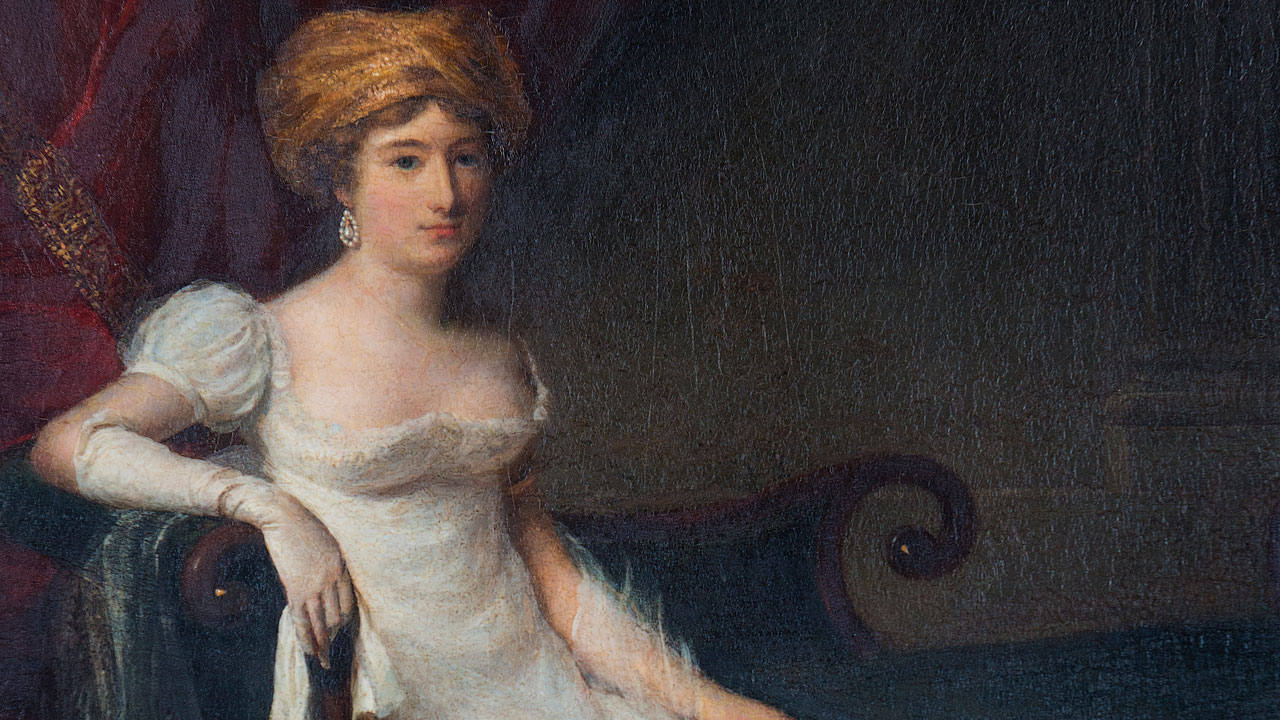[box]Hester Catherine Browne, also known as Lady Sligo. (By Louis-Leopold Boilly).[/box]
Ireland’s Great Hunger Institute and the Arnold Bernhard Library at Quinnipiac University will present the exhibit “The Lady Sligo Letters: Westport House and Ireland’s Great Hunger,” beginning May 1.
“The Lady Sligo letters are a unique collection of documents that chart a turbulent period in Irish history in the mid-19th century,” said Christine Kinealy, professor of history and director of Ireland’s Great Hunger Institute. “Hester Catherine Browne, also known as Lady Sligo, was part of the Anglo-Irish elite that had governed Ireland for centuries. Despite her wealth and social position, she repeatedly demonstrated her concern for the poor who lived on her estate in County Mayo.”
Lady Sligo lived from 1800-1878. Her collection includes more than 200 letters covering the period of the Great Hunger and adds an important new dimension to scholarly understanding of the tragedy.
“Students can view actual documents from the 19th century, which will make their learning experience both more authentic and more powerful,” Kinealy said.
The letters and related artifacts will be displayed in the Lender Family Special Collection Room, located in the Arnold Bernhard Library on the university’s Mount Carmel Campus.
“The Lady Sligo Letters were acquired by Quinnipiac University because of their significance in fulfilling the mission of the Lender Special Collection, which is to be the largest repository in the United States related to the history of Ireland’s Great Hunger,” said Robert Joven, university librarian. “The letters are an important primary resource that provide a view of the famine from a unique perspective, that of a titled woman of the Anglo-Irish gentry. The Arnold Bernhard Library is honored to be the repository for this original collection.”
Ireland’s Great Hunger Institute is a scholarly resource for the study of the Great Hunger. Through a strategic program of lectures, conferences, course offerings and publications, the institute fosters a deeper understanding of this tragedy and its causes and consequences.
In addition to Ireland’s Great Hunger Institute, Quinnipiac University is also home to Ireland’s Great Hunger Museum, which features the world’s largest collection of visual art, artifacts and printed materials relating to the Irish Famine.
The year-long exhibit is free and open to the public. The hours are Monday through Saturday from 9 a.m. to 5 p.m. and Sundays from noon to 5 p.m.
For more information, call 203-582-8633.
